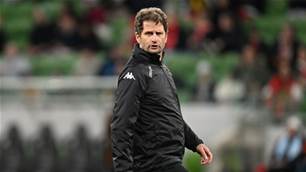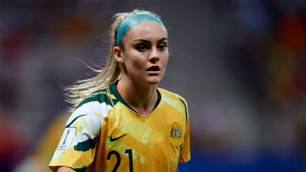As the dust settles on the Matildas exit from the FIFA Women's World Cup, there have been many ideas thrown up as to what the next steps should be.
Should FFA be focusing on W-League? Should W-League be a fulltime league? Should there be a focus on youth development?
Well, the answer isn't a simple one.
W-League
"My understanding is that the clubs are putting forward a strategy for A-League, W-League and Youth League so I think within those strategies we need to look really carefully at what would be the best outcome for the W-League," Independent Chair of the FFA Women’s Football Council Ros Moriarty told The Women's Game.
So what is Australia's model?
At the moment, W-League nearly fully aligns with A-League with the exception of Canberra United, who don't have a men's team. However, there have been talks of the possibility of not having W-League and A-League teams align like they currently do going forward.
However, this seems to be the way European teams are moving forward and even teams in Asia. The likes of Atletico Madrid, Manchester United and AC Milan all boast women's teams with Real Madrid becoming the latest to announce a women's program.
A massive difference though is that Europe has the Champions League which allows teams from leagues across the continent to come up against each other.
This is just not possible in Asia, for a number of reasons, so Australia is exposed less to big competitions unless it's on a national team level. Even then it can be difficult to get teams out here without local or state Government level support but that's another issue on its own.
Meanwhile, a fulltime league has been an idea that has also been thrown around but it poses its own questions and could be why it hasn't been implemented. The biggest resistance, it appears, is the possibility it will overlap with the NWSL season, where many Australians are currently plying their trade in the off-season.
NWSL generally runs from March/April to September.
If FFA were to run W-League for the full 18 rounds plus the two-week finals series and starting the same time as they did for the 2018/19 season, W-League would run into mid-March.
However, a full W-League season wouldn't always overlap with NWSL, there is a possibility that they could fit into the calendar quite well but it will take some discussion between both competition organisers to ensure this happens.
If this were to be a realised a fully professional W-League could become a reality.
Youth development
The topic of youth development has been thrusted into the spotlight once again, mostly because FFA pretty much forgot to include girls development in the Player Pathway Review announcement.
Speaking with Moriarty about youth development, it's an area of focus for the FFA Women's Football Council because they aren't just about elite football.
"We're not just about the elite pathway but we're also about opening participation to girls and women," she said.
"We need an optimal female talent pipeline from grassroots to elite for us to be competitive at the elite level on the world stage.
"To achieve that, we need to see the growth of participation by women across the game so I think those two are the critical ones that play into each other."
In the 2018 Participation Report released by FFA in February this year, there was an increase of 13 per cent on Australians participating in football.
Women and girl participation grew by two per cent (141,487) on outdoor, registered futsal and social with 113,207 of those registered playing outdoor affiliated football. Looking at three levels of football MiniRoos, Youth and Senior, women's sit around the 20 per cent mark with boys and men sitting around 80 per cent.
While there has been growth and that is important to see, the dream of having a 50/50 split between boys and girls is still far away.
There could be a few factors involved in this, Moriarty notes the environment could be a factor in having more women and girls play.
"Football is the most played sport in Australia, so there isn't any reason that young girls will not play football given the right environment," she said.
"There's a lot to be done on creating the right environment for girls to play and grow in the game and women to have the opportunity to play or to coach or to be a referee or to manage or direct lead.
"It is a very powerful game, and it has power beyond the game. There is a brilliant opportunity right now in Australia to make the changes to attract and keep female talent in the game, at the same time using the sport to position girls and women for greater social equality more generally."
Another factor and one that has also been tossed up in the men's game is the cost of the sport.
It's not cheap with National Premier League (NPL) clubs season expenses running into $2,000 or more depending on where a player lives. That's not including the cost of fuel to travel to training or games among other expenses.
Players also have the choice of playing in the local leagues where prices are much cheaper, playing another sport completely or just dropping out when it becomes to expensive.
Let's not forget about the differences between NPL Women's programs between the states and territories too. States like Western Australia, Northern Territory and Tasmania don't even have an NPL Women's or girls competition while South Australia only have an NPL Women's competition.
So players in these states are already at a disadvantage of trying to achieve their dream of becoming the next Matilda because they don't have the same development pathways as those on the east coast.
At a national level, the Young Matildas haven't made a U20's World Cup since 2006 while the Junior Matildas have never made one. Japan, China and North Korea lead these youth spaces and are the powerhouses in women's youth football in Asian especially Japan, who won the 2018 U20 Women's World Cup.
How can Australia ensure they remain competitive at an international level? Does FFA have an answer for this?
It's why youth development needs to be an area that needs reform.
FFA, state federations and clubs must look at these pathways to see why this is happening. It's been going on for too long now and a gap is forming between the current Golden Generation and the future stars of the game.
Leadership
It goes without saying but there needs to be strong leadership throughout women's football to direct the future of the game.
"I think FFA really need to provide strong leadership in women's football to make associations, clubs and schools aware of what might be the inhibiting factors for the growth of football for girls and women," Moriarty said.
These leaders don't just have to be female but they have to be people who are passionate and want real change in women's football here in Australia.
"There is still quite a lot of behaviour that doesn't demonstrate equality and it's why the council has adopted as its charter, and why through advocacy and through keeping stakeholders accountable that we will ensure equality in football for women and girls," Moriarty said.
With strides being taken by nations across the globe to ensure the future of women's football, Australia needs to follow or they will be left behind.
Related Articles

'Timing not right': Montemurro's verdict on Matildas vacancy

Matildas: 'Fourth at the Olympics is honestly the worst place you could come'
.jpg&h=172&w=306&c=1&s=1)














